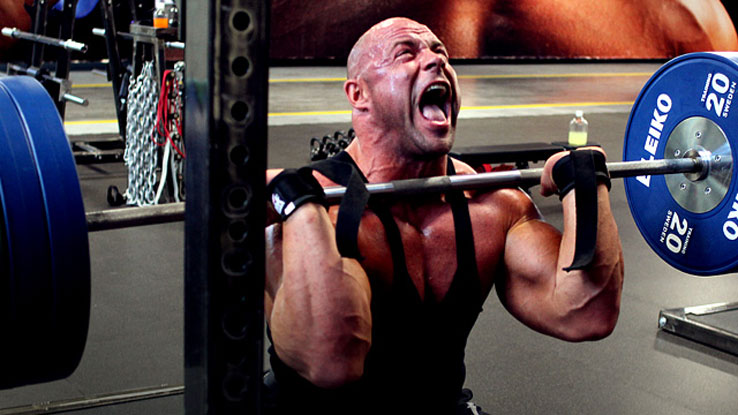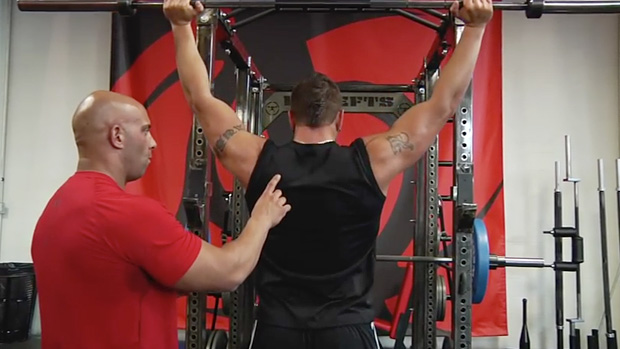Here's what you need to know...
- The most successful athletes can harness their strength instantly.
- RFD, or Rate of Force Development, is how quickly force can be mustered.
- The more rapidly you recruit muscle fibers, the more force you produce.
- If you don't have this ability, you can train to develop it.
The best athletes and lifters are the ones that can harness the power of their explosive strength base within a split second. Here's how to do it.
Strength, Force, and Rate of Force Development
First, some definitions:
- Maximal strength, or limit strength, is the amount of muscular force that can be produced during a singular all-out effort.
- Force is a time-dependent expression of strength, and is defined by magnitude or rate at which the mass of a body or object moves.
- Rate of Force Development, or RFD, is how quickly muscular force can be produced.
Training for RFD hinges on the velocity of muscular contraction through the rapid recruitment, activation, and synchronization of motor units. To do this, you have to muster maximal force generation at the beginning of a movement without a preceding stretch or countermovement.
RFD Training Prerequisites
To get the most out of the following RFD training protocols, you should possess a respectable level of limit strength:
- Max bench press = 1.25 x bodyweight
- Max squat = 1.5 x bodyweight
- Max deadlift = 1.75 times x bodyweight
If you're not quite there yet, your priority should be to get stronger by sticking with the basics. Maximal Strength Training for Muscle Mass is a great place to start.
The good news is that you can improve max strength and RFD concurrently. Literature has suggested that maximal strength training improves RFD in lesser-trained individuals (1,2).
In most sports, high force outputs must occur in the shortest amount of time possible. In strength sports such as powerlifting – where limit strength is the name of the game – the time it takes to produce force is essential to success. The quicker you move your limbs and exert force on the barbell, the less likely you are to hit a sticking point.
In fact, merely lifting an object with the intention of moving it fast makes it feel lighter.
Speed Kills
Remember, speed reigns supreme in virtually every sport. When looking at the force-velocity curve, it's the final destination.
So how do you make someone who's already strong, faster?
The inclusion of starting strength and explosive strength training protocols will bridge the gap between maximal strength and speed.
Train for Starting Strength
Starting strength is the ability to recruit tons of muscle fibers as quickly as possible. It can be enhanced by incorporating movements that occur from a dead stop, also known as "dead movements."
Dead movements are concentric-only movements that eliminate the contribution of the stretch shortening cycle, so there's no reversible muscle action or momentum to help out.
You can improve RFD by improving starting strength. The more rapidly you can recruit muscle fibers to perform a task, the more force you can produce.
The most notable dead movement is the deadlift, which in comparison to proportionately loaded squat, step-up, and lunge exercise, elicits the greatest amount of concentric rate of force development (3).
Step-ups, another concentrically dominant movement, notched the second greatest amount of concentric rate of force development.
Similarly, squats and overhead presses can also be performed from a dead stop off safety bars in a power rack. For a bench press dead stop variation, simply use a pause on the chest or from the power rack's safeties.
Train for Explosive Strength
Explosive strength is your body's ability to maintain a high rate of force output throughout an entire movement. Examples of explosive strength are an offensive lineman drive-blocking his opponent into oblivion or a shot putter "putting" the shot as far as possible.
Improving explosive strength involves the Olympic lifts and their variants, as well as Compensatory Acceleration Training (CAT) and exercises with variable resistance such as barbells with bands and chains.
Train for Explosive Triple Extension
Triple extension is crucial in sport and life.
Examples of athletes achieving triple extension include a forward leaping over a defender en route to a thunderous dunk, an outfielder leaping to snare a hard hit line drive, or a wide receiver elevating himself over a cadre of defensive backs to catch a pass deep in the end zone.
Triple extension involves the simultaneous extension of the hips, knees, and ankles and can occur bilaterally or unilaterally in vertical, horizontal, and lateral movements.
Traditionalists feel that triple extension should only be trained through Olympic lifts. However, any explosive ground-based movement such as plyometrics and trap-bar jumps, or strongman event exercises such as tire flips, log cleans, keg rolls, and stone lifts can serve as viable alternatives.
Plyometrics for Triple Extension
Plyometrics enhance the body's ability to summate force and increase power output.
Although advanced jumping exercises don't have the steep learning curve of the Olympic lifts, plyometric exercises must still be appropriately programmed and progressed based on the lifter's training history, strength, and goals.
A continuum of progressions should be followed for each type of jump. For instance, the squat jump must be perfected before engaging in unilateral, multi-planar, and weighted jumps.
Similarly, bounding, jumping over objects, and depth jumps entails the following progression:
- Isometric Squat Holds
- Bodyweight Squat
- Squat with Pause at Bottom, followed by mini hop and soft landing
- Vertical Jump from Partial Squat Position
- Squat with Quick Descent into Vertical Jump
To mitigate the landing forces associated with jumping, the athlete or lifter can land on a plyometric box or surface with a large landing area.
Training with Submaximal Loads
Remember, when the goal is RFD enhancement, don't go too heavy. Think light-load, explosive training for RFD.
Compensatory Acceleration Training involves lifting weights with maximal force throughout the entire range of motion.
An example is a full squat overloaded at the bottom of the movement, but as you squat the weight up, leverage improves and so does the ability to produce more force.
At that point in the lift you have a choice: step on the brakes and coast, or hit the gas. To maximize RFD adaptations, always hit the gas.
Bottom line, lift weights with the intention of moving them explosively.
RFD Template
Enough theory! Now that you understand what Rate of Force Development is and the tools required to create it, let's take a look at a sample program to improve RFD.
Day 1
| Exercise | Load | Sets | Reps | |
| A | Squat Jump Variation | 3 | 3 | |
| B | Dead Squat | 65% | 8 | 1 |
| C | CAT Deadlift | 60% | 8 | 3 |
| D | Glute-Ham Raise | 3 | 5 | |
| E | Barbell Hip Thrust | 3 | 8 | |
| F | Weighted Crunch | 3 | 10 |
Day 2
| Exercise | Load | Sets | Reps | |
| A | Smith Machine Bench Press Throw | 15% | 4 | 3 |
| B | Push Press | 80% | 3 | 3 |
| C | Dead Bench Press | 70% | 8 | 1 |
| D | Neutral Grip Pull-up | 3 | 6 | |
| E | Face Pull | 3 | 12 | |
| F | Plank | 3 | * |
* max time
Day 3
| Exercise | Load | Sets | Reps | |
| A | Squat Jump Variation | 3 | 3 | |
| B | Box Squat | 3RM | 3 | 3 |
| C | Bent Over Row | 6 | 3 | |
| D | Bench Press | 85% | 3 * | 4 |
| E | One-Arm Row | 3 | 6/side | |
| F | Triceps/Biceps Combo | 3 | 12 | |
| G | One-Leg Dumbbell Deadlift | 3 | 8/side |
* last set max reps
Key Points
- All core lifts are to be performed as explosively as possible.
- Training should take place on non-consecutive days.
- The program is ideal for the athlete or lifter with a number of commitments who wants to get more explosive.
Simplify Your Approach
You get what you train for. Adaptations are specific to the imposed physiological, biomechanical, and neurological demands.
If you continually punish yourself with metabolic death circuits, you'll eventually puncture a hole in your aorta or come down with a menacing case of rhabdo.
Likewise, if you train to be slow, you'll end up slow. This is why you don't see any marathon runners lacing up a pair of spikes for 100-meter races.
You're an athlete. You deserve better and now you know better. Train your body to produce force rapidly with the program provided – you'll become more explosive and faster.
References
- Heggelund J, Fimland MS, Helgerud J, et al. Maximal strength training improves work economy, rate of force development and maximal strength more than conventional strength training. Eur J Appl Physiol. 2013. [Epub ahead of print]
- Aagaard P, Simonsen EB, Andersen JL, et al. Increased rate of force development and neural drive of human skeletal muscle following resistance training. J Appl Physiol. 2002;93:1318-1326.
- Wurm BJ, Garceau LR, Zanden TL, et al. Ground reaction force and rate of force development during lower body resistance training exercises. International Symposium on Biomechanics in Sports: 2010.





